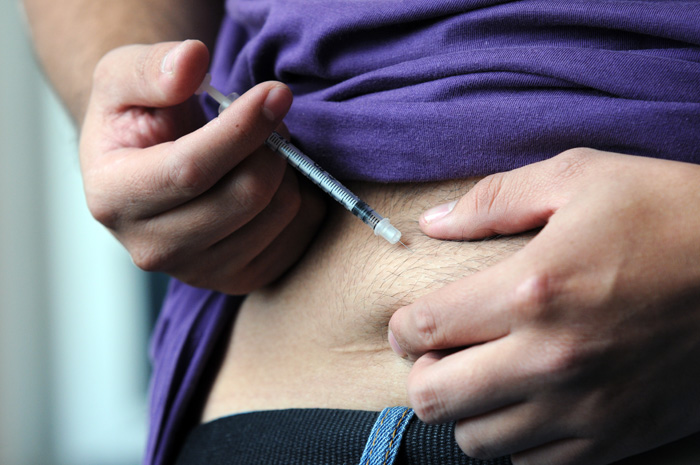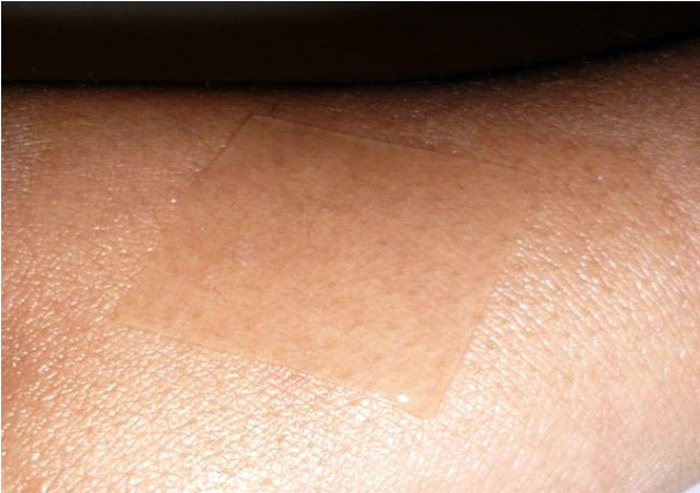Due to diabetes, Pablo Ramirez has been injecting medicine to his body with small needless for more than 20 years for using the insulin that controls the sugar levels in his blood. Apart from the time he needs to use the needles (10 minutes minimum) and hurting his skin, he has to assume the cost of the needles, alcohol and cotton (around 50 thousand Colombian pesos per month).
Like him, many people have to use medicine intravenously, orally (drops, syrups), rectally (suppositories and ointments) topically (baths and drops) or through the skin (percutaneous or transdermal). This last method has been investigated during the last 30 years, and it is characterized by the use of patches as a means for the administration of some pharmaceuticals.
Traditionally, they have been fabricated from chemical substances, but now the Research Group in Pharmaceutical Technology, conformed by Professors Hélber de Jesús Barbosa and Bibiana Vallejo, has innovated in their design. They are elaborating these films based on polymeric substances of vegetal origin such as cellulose, starch and jelly extracted from trees and plants.
Some pharmaceuticals and extracts with proved biological activity are being applied onto these films and, when they are attached to the skin, they facilitate, in a controlled way, the degradation of such substances until they reach the bloodstream. Therefore, infections are treated.
According to professor Barbosa, all medicines are composed by three elements: an active element or substance that causes an effect; auxiliary formulation elements that help acting it in a stable and safe way, and a technological application for its fabrication. "The final results are pills, tablets, syrups, capsules, among others," asserted the expert.
In Universidad Nacional de Colombia, some certified extracts from vegetal origin (essential oils and medicinal plants, etc) studied in the Chemistry Department were applied to the plaster, under direction of Professor Luis Enrique Cuca.
The in vitro pilot test to prove its effectiveness is being made by Researcher Lucy Gabriela Delgado, who leads an alternative project to treat cutaneous leishmaniasis. This pharmaceutical chemist has experimented successfully the use of botanic extracts, and now she is testing their inclusion in polymeric films to determine their therapeutic action and response in patients who suffer from this tropical disease.
Professor Barbosa asserts that in the cases of coutaneous disease, a patch to put directly on the wound without reaching the circulation of blood is being developed.
Although the use of patches is common, "our objective is to take advantage of the film to transport medicine such as diclofenac, iodine, and insulin, aiming at proving that they can be releases in a specific place that requires the organism and therefore prevent the collateral effects," asserted the expert.
Traditional transdermal patches are used to treat pathologies such as hypertension, chronic pain and smoking. As contraceptives, they have the function of inhibiting ovulation and their effectiveness is similar to that of oral traditional tablets, according to the gynecologist Maria Yolanda Torrente. "Few women use them, since they are not included in the Compulsory Health Plan. Most of them prefer the injection every month or the pills that are offered in health plans," asserted the gynecologist.
Advantages
Several benefits have been found with the use of these films. For instance, patients who have difficulties swallowing medicine can just put them on their skin.
Those who have to consume medicine two or three times in a day can occasionally suffer from digestive injuries and adverse reactions to the medicine in their organisms. Since patients do not directly swallow the medicine, patches prevent any secondary effect.
The speed in which medicine works is related to a prolonged therapeutic action. Therefore, the user will not depend on some limited hours of tranquility (as in the case of pills or injections every 6 or 8 hours, depending on the doses), nor suffer the risk of missing the hour for the use of the medicine.
Additionally, skin will not be seriously affected with the pass of time, a situation that happens in patients with diabetes, nor will deteriorate the digestive system of those who need to intake big amount of medicine daily.
Patches relieve pain, minimize the risk of following schedules and are better accepted by patients, since they do not cause discomfort.
 Correo Electrónico
Correo Electrónico
 DNINFOA - SIA
DNINFOA - SIA
 Bibliotecas
Bibliotecas
 Convocatorias
Convocatorias
 Identidad UNAL
Identidad UNAL




